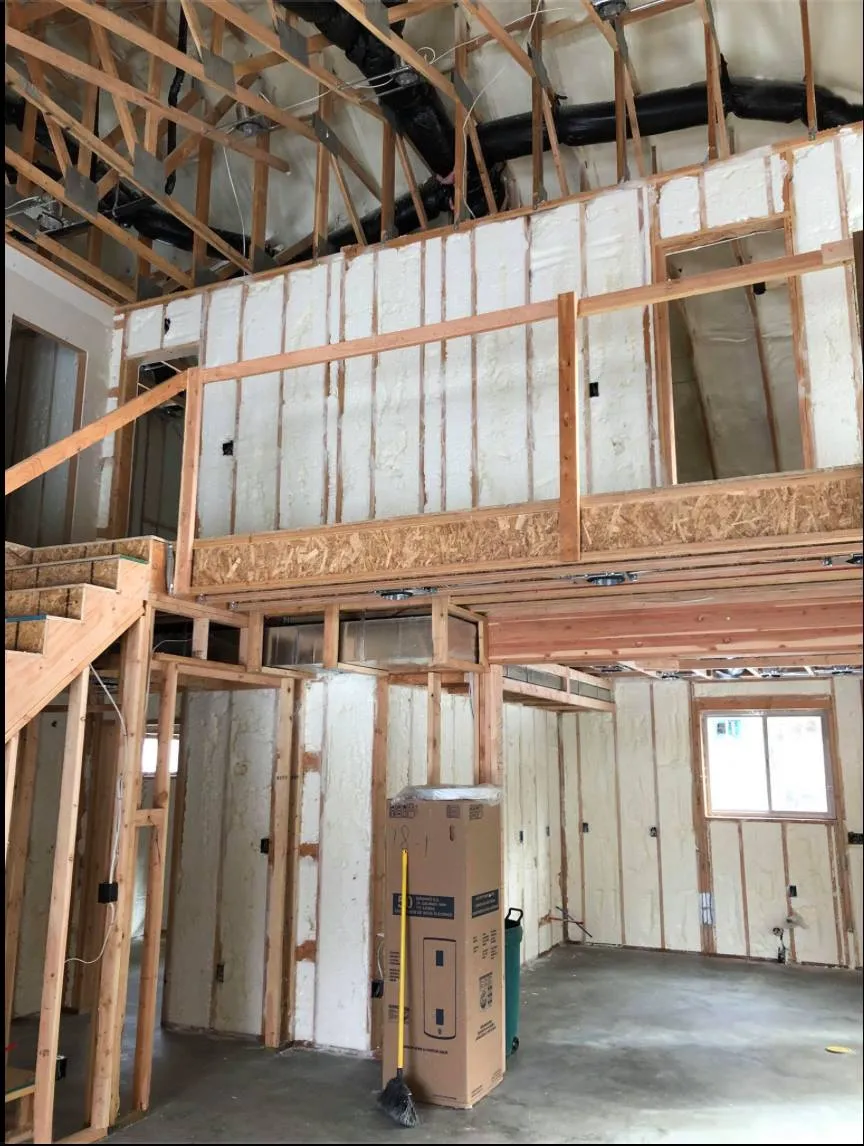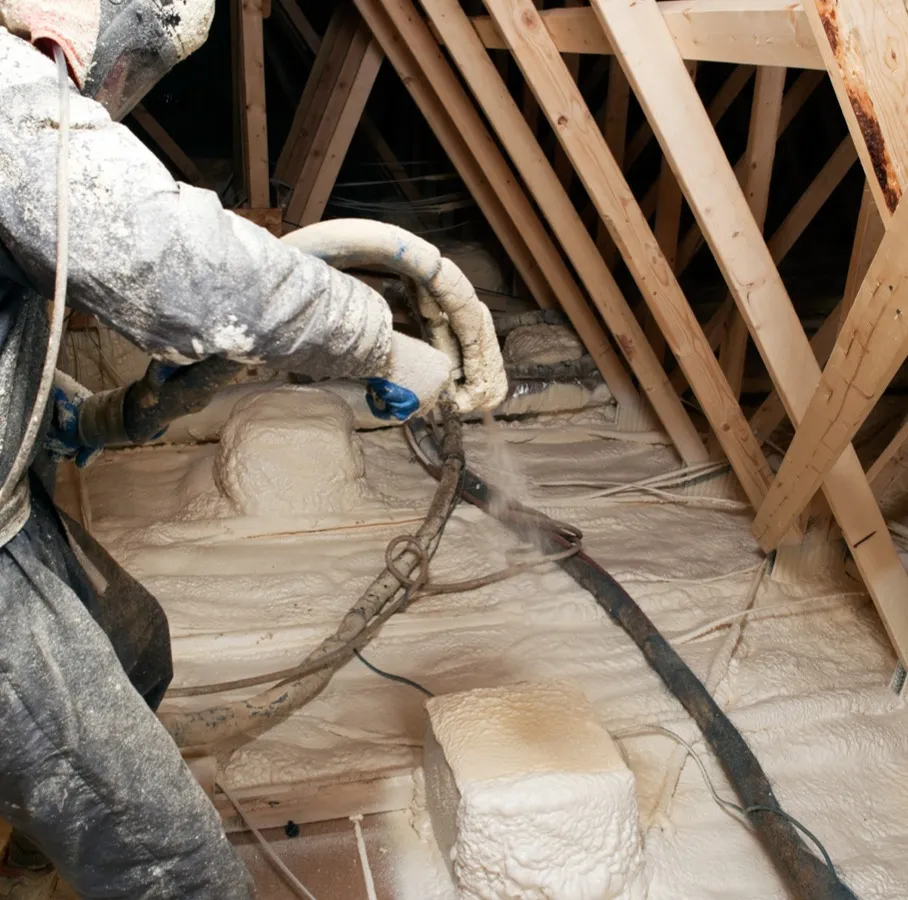
Choosing the right insulation depends on structure type, regional climate, and performance expectations. Closed-cell spray foam provides superior thermal resistance and moisture control, making it ideal for extreme climates. Open-cell spray foam is suitable for interior applications where sound absorption matters. Blown-in fiberglass or cellulose fits attics with irregular joist spacing. Each system offers benefits based on intended use, not a one-size-fits-all approach.
This guide details how insulation types compare, how they perform in northern Nevada’s dry and wide-temperature-range conditions, and what factors to assess before installation. Nevada Urethane draws on firsthand field experience with residential, commercial, and agricultural structures throughout the region.
| Insulation Type | Best Use Areas | R-Value Per Inch | Air Seal Capability | Moisture Resistance | Notes |
|---|---|---|---|---|---|
| Closed-Cell Spray Foam | Roofs, exterior walls, crawlspaces | 6.0 – 7.0 | High | High | Strong structural support; vapor barrier |
| Open-Cell Spray Foam | Interior walls, sound barriers | 3.5 – 3.8 | Moderate | Low | Not suitable for moisture-prone areas |
| Blown-In Fiberglass | Attics, wall cavities | 2.2 – 2.7 | Low | Moderate | Requires complete cavity fill to perform well |
| Cellulose (Blown-In) | Attics, retrofits | 3.2 – 3.8 | Low | Moderate | Made from recycled material; prone to settling |
| Rigid Foam Board | Basement walls, below-grade areas | 4.5 – 6.5 | Low | High | Adds continuous insulation with proper sealing |
Northern Nevada’s high desert climate includes wide temperature swings, low humidity, and high solar gain. Insulation must handle cold winters, hot summers, and large daily thermal fluctuations.
| Environmental Factor | Impact on Insulation Choice |
|---|---|
| Low Humidity | Favors spray foam due to minimal condensation risk |
| Freeze-Thaw Cycles | Closed-cell spray foam resists expansion damage |
| Summer Heat Loads | High R-value materials reduce cooling loads |
| Roof UV Exposure | Spray foam with protective coating prolongs life |
Bonus Tip: Unvented attics sealed with closed-cell spray foam outperform vented roofs by reducing thermal bridging and air leakage.

| Specification | Closed-Cell Foam | Open-Cell Foam | Blown-In Fiberglass | Cellulose |
|---|---|---|---|---|
| R-Value/inch | 6.5 | 3.7 | 2.6 | 3.5 |
| Air Leakage (ASTM E283) | <0.01 cfm/ft2 | 0.2 cfm/ft2 | 1.0 cfm/ft2 | 0.9 cfm/ft2 |
| Vapor Permeance (perm) | <1 (Class II VB) | 10 – 20 | >20 | >20 |
| Water Absorption (ASTM C272) | <0.5% | >5% | Moderate | Moderate |
Bonus Tip: Always assess existing insulation depth and condition before adding new layers compression or saturation can significantly lower effectiveness.
Closed-cell spray foam often eliminates the need for attic ventilation. It creates an air-tight barrier when applied directly to roof decking.
Yes, but only after assessing the condition of existing insulation. Wet, moldy, or compressed materials should be removed.
Spray foam can last 20+ years without degradation if installed correctly and protected from UV exposure.
It performs well if the attic is dry and has balanced ventilation. Higher summer heat loads may require increased thickness.
Match insulation to building type, moisture exposure, and energy goals. Avoid generalizations—each material has specific strengths when applied correctly in the right setting. Confirm installation quality and compatibility with existing structure to get full performance benefits.
For help identifying which insulation type is right for your property, contact Nevada Urethane at (775) 397-2820 or [email protected]. Each installation is guided by on-site evaluations of structure type, existing conditions, and Nevada’s climate. Guidance comes from real-world application, not theory.
Minimal. Check exposed areas yearly for signs of UV damage or mechanical wear in open crawlspaces or attics.
Closed-cell foam resists moisture entry. If installed in a saturated structure, it can seal in dampness—pre-dry all areas before application.
Cellulose settles slightly (up to 20%), while fiberglass holds shape better. Adjust thickness during install to compensate.
Air sealing from spray foam can reduce dust and allergens by limiting outdoor air infiltration.
Open-cell spray foam provides strong sound absorption. Dense cellulose can help in wall cavities but performs less effectively in open attics.